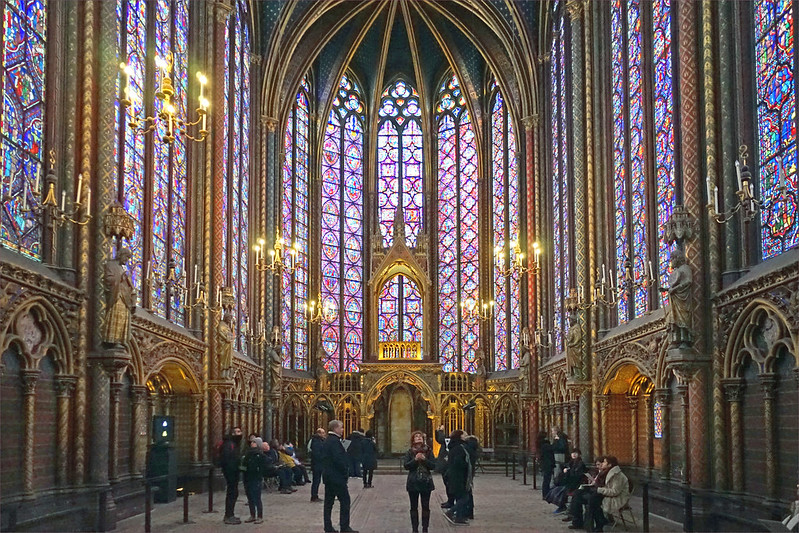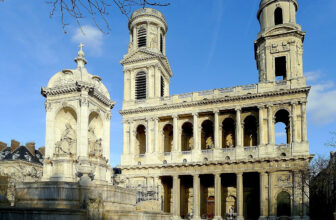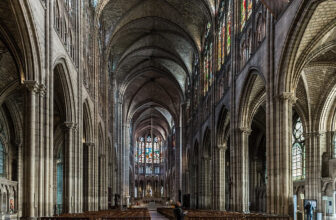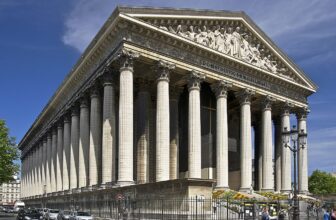
What is special about Sainte Chapelle Paris?
Nestled in the heart of Paris on the Île de la Cité, Sainte Chapelle is one of the most stunning and historically significant landmarks in France. Renowned for its breathtaking Gothic architecture and resplendent stained-glass windows, this 13th-century chapel is a masterpiece that continues to captivate millions of visitors each year. Its spiritual and artistic significance makes it a must-visit destination for anyone exploring the rich cultural tapestry of Paris.
A Jewel of Gothic Architecture
Sainte Chapelle was commissioned by King Louis IX, later canonized as Saint Louis, and constructed between 1242 and 1248. The chapel was built as part of the royal palace complex and served as a grand repository for some of Christendom’s most precious relics. Designed in the Rayonnant Gothic style, Sainte Chapelle epitomizes the architectural trends of its time, emphasizing verticality, light, and intricate detailing.
What sets Sainte Chapelle apart is its harmonious proportions and ethereal beauty. Unlike larger Gothic cathedrals like Notre-Dame, Sainte Chapelle is compact, yet it achieves an unparalleled sense of grandeur through its soaring stained-glass windows and delicate stonework. The building consists of two distinct levels: the lower chapel, originally used by palace staff, and the upper chapel, reserved for the royal family and housing the sacred relics. Both levels showcase intricate decorations, but it is the upper chapel that steals the show with its unparalleled artistry.
The Stained-Glass Masterpiece
The crowning glory of Sainte Chapelle is its collection of 15 immense stained-glass windows, which together cover an astonishing 618 square meters. These windows are among the most complete and well-preserved collections of 13th-century stained glass in the world. In total, there are approximately 1,113 individual pieces of stained glass, each meticulously crafted to tell biblical stories in vivid, jewel-like colors.
Each window is composed of numerous panels that depict scenes from both the Old and New Testaments. The narrative begins with the Book of Genesis and culminates in the Apocalypse, creating a visual timeline of biblical history. The artistry is extraordinary, with intricate details that bring these sacred stories to life. The interplay of light and color creates a celestial atmosphere, particularly on sunny days when the sunlight filters through the glass, casting a kaleidoscope of hues onto the chapel’s interior.
The rose window, located on the western wall, is another standout feature. Added in the 15th century, it represents the Last Judgment and is a testament to the enduring craftsmanship that has preserved Sainte Chapelle’s beauty over centuries.
A Reliquary for Sacred Treasures
One of the primary reasons Sainte Chapelle was built was to house the Crown of Thorns, one of the most revered relics in Christianity. King Louis IX acquired the Crown of Thorns in 1239 for an exorbitant sum, underscoring its significance to him and to Christendom as a whole. The relic was brought to Paris from Constantinople, where it had been safeguarded by the Byzantine emperors. In addition to the Crown of Thorns, Louis IX also obtained other Passion relics, including a fragment of the True Cross and the Holy Lance.
To honor these relics, Louis IX envisioned a chapel that would serve as both a reliquary and a spiritual beacon. The construction of Sainte Chapelle was not merely an architectural endeavor but a profound act of faith. The upper chapel’s design, with its soaring windows and golden reliquaries, was meant to evoke the heavenly Jerusalem, symbolizing divine light and glory.
Today, the Crown of Thorns is no longer housed in Sainte Chapelle, having been transferred to Notre-Dame Cathedral. However, its historical connection to Sainte-Chapelle adds a layer of sacred significance to the chapel’s legacy.
The Role of Sainte Chapelle in History
Beyond its architectural and spiritual importance, Sainte Chapelle has played a pivotal role in French history. As part of the royal palace, it was at the heart of medieval Parisian life. The chapel was a symbol of the monarchy’s divine right to rule, and its construction reinforced King Louis IX’s image as a devout and pious leader.
During the French Revolution, Sainte Chapelle faced significant challenges. Many of its treasures were confiscated, and some of the stained glass was damaged. However, the chapel was spared total destruction and was later restored in the 19th century under the supervision of architect Eugène Viollet-le-Duc. This meticulous restoration ensured that future generations could continue to marvel at this Gothic gem.
Experiencing Sainte Chapelle Today
Visiting Sainte Chapelle is an unforgettable experience. As you step into the upper chapel, you are immediately struck by the overwhelming beauty of the stained-glass windows. The sheer scale and detail of the artwork invite contemplation, offering a moment of transcendence in the bustling heart of Paris.
The chapel also hosts concerts, where the ethereal strains of classical music resonate within its sacred walls. These performances add another dimension to the experience, allowing visitors to appreciate the chapel’s acoustics and ambiance.
Sainte Chapelle is more than just a historical monument; it is a testament to the power of faith, art, and human ingenuity. From its unparalleled stained-glass windows to its role as a reliquary for sacred treasures, this Gothic masterpiece continues to inspire awe and wonder. Whether you are a history enthusiast, an art lover, or a spiritual seeker, a visit to Sainte Chapelle offers a glimpse into the divine, leaving an indelible impression that lingers long after you’ve left its hallowed halls.




